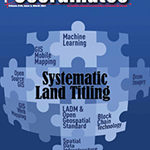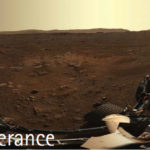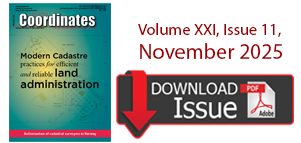Raytheon gets $228 million contract extension for GPS ground system
Raytheon received a $228 million contract to continue development of a ground system for GPS satellites, the Space Force’s Space and Missile Systems Center announced April 30. The contract is for work on the operational control system for the newest version of GPS 3 satellites made …
Freestyle 2 handheld scanner for construction by FARO
FARO Technologies, Inc., recently released the Freestyle 2 Handheld Scanner for Construction. This fast, portable, and targeted 3D data capture device can scan even the tightest spaces more easily than ever. For the construction industry, accurate dimensions and locations are needed when coordinating with scope done earlier …
EGNOS and Galileo on the ambitious Digital Rail agenda
The European Year of Rail brings attention to a number of topics important for improving the role of rail within the EU transport ecosystem. The recently published Policy paper “Challenges for European rail – getting solutions on track” by Jacques Delors Institute, highlights the main challenges …
NavVis IVION Core
NavVis, an innovator in mobile mapping and reality capture launched of NavVis IVION Core.
Previously known as NavVis IndoorViewer, NavVis IVION Core is a reality capture platform where you can manage your 3D scans with intuitive tools for creation, collaboration, and publication. NavVis IVION Core makes mobile mapping workflows more efficient, speeds …

As Christopher Alexander conceived and defined through his life’s work – The Nature of Order – wholeness is a recursive structure that recurs in space and matter and is reflected in human minds and cognition. Based on the definition of wholeness, a mathematical model of wholeness, together with its topological representation…

Volume XVII, Issue 3, March 2021
Using geomatics to fight the pandemic in Italy: A case study
Michail Elaiopoulos, Nella Vulcano, Norman Kevin Pisterzi, Alessandro Bianchi and Cristiana Patruno
Surveying1 education – Prospects and challenges post COVID-19
David Mitchell
What do the New Geospatial Guidelines have for Spatial Planners?
Mahavir and Prabh Bedi
Systematic Land Tilling using Open Source Geospatial Software and …

Another feat of human perseverance
When the Mars 2020 Perseverance Rover
Landed on the surface of Mars on Feb 18,2021
To look for habitability, seek biosignatures, cashing samples and
test oxygen production from the Martian atmosphere.
Equipped with new entry, descent, and landing (EDL) technologies, such as Terrain-Relative Navigation (TRN),
That allows the rover to …
Large-scale Deployment for Sonardyne Fetch AZA
A new breed of underwater sensor that is able to self-calibrate, enabling precise, long-duration subsidence monitoring at all depths, has been deployed at scale for the first time. The 20-plus Fetch Ambient- Zero-Ambient (AZA) pressure monitoring transponders (PMTs), developed by underwater technology specialist Sonardyne, will support an ongoing longterm, …












 (5.00 out of 5)
(5.00 out of 5)